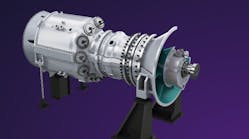The UK Atomic Energy Authority’s Spherical Tokamak for Energy Production (STEP) program is planning a prototype nuclear fusion energy power plant in the UK.
The project (see rendering in image gallery) will pave the way for the development of commercial power plants to supply low-carbon energy.
The site for the project will be selected by the Secretary of State at the Department of Business, Energy and Industrial Strategy and a final decision is expected by the end of 2022. The residents and stakeholders from the five shortlisted sites will be informed about the benefits of fusion energy and how the proposed project will create skilled jobs and attract high-tech industries to its host region.
The authority hopes to get design concept in place by 2024 and be in operation early in the 2040s, according to reports.
A series of virtual community forum events will be held between this past Wednesday and Feb. 10 in each of the five shortlisted sites, namely Ardeer (North Ayrshire), Moorside (Cumbria), Goole (East Yorkshire), West Burton (Nottinghamshire), and Severn Edge (Gloucestershire).
Tristram Denton, Head of Commercial and Programme Development for STEP, said: “STEP is not just of strategic importance to UKAEA, but to the national and global efforts to harness fusion technology in the fight against climate change. While it’s still early days, we anticipate that the host region will become a global hub for a wide range of technological and scientific expertise, leading to massive economic opportunities.
Denton added, “The UK government is committed to net zero by 2050 and fusion is one part of the long-term solution, alongside a continued increase in energy from renewable sources like wind and solar power.”
Fusion is different from nuclear fission, in which a reactor houses and contains the nuclear atom split to create energy. In fusion, similar to the sun's energy, hydrogen would heated to superthermal temperatures and create conditions for nucei to fuse.





